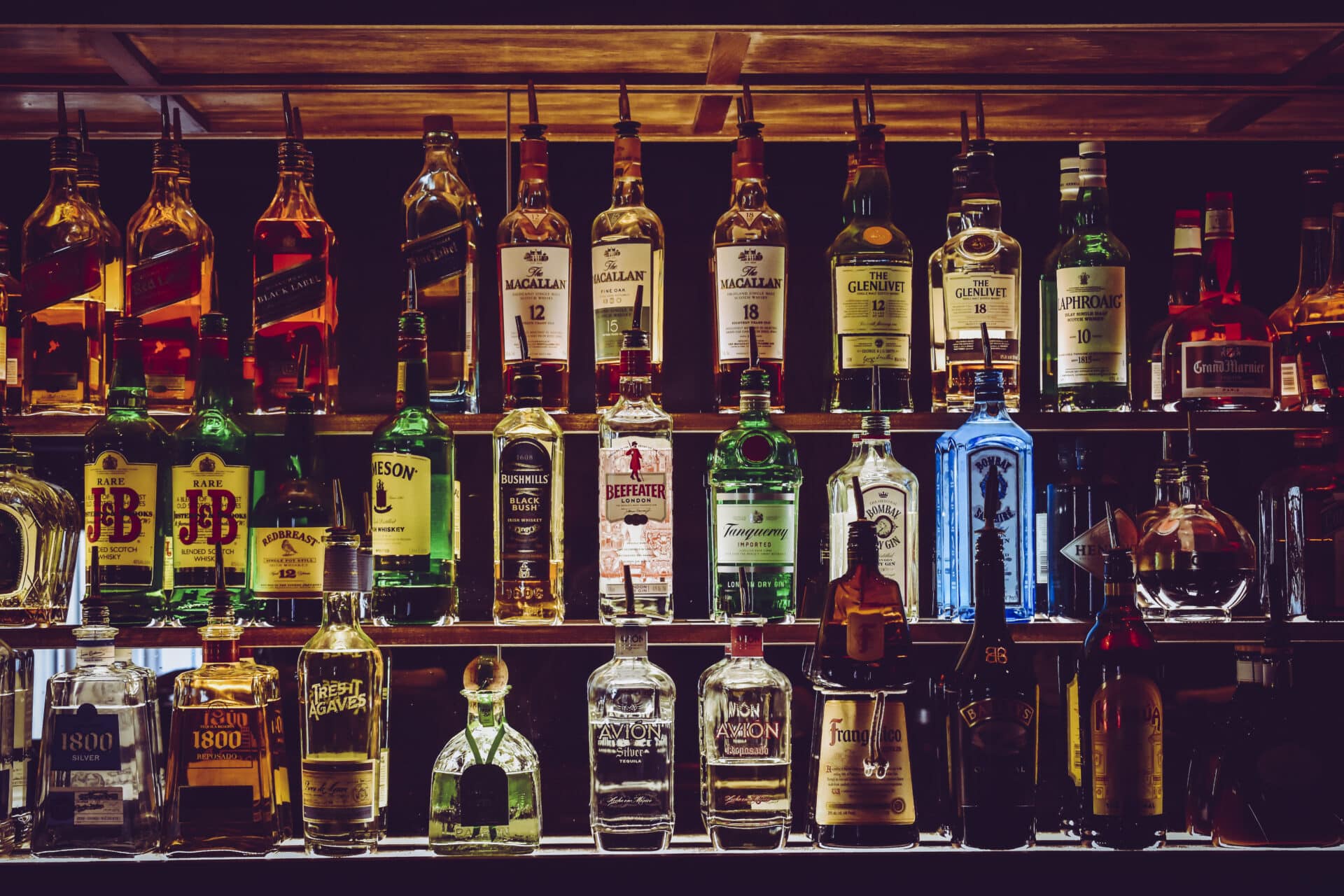Distilling is a process that is used to make vodka. It involves separating the liquid from its impurities and concentrating the alcohol content of the liquid. During distillation, vodka is heated until it reaches its boiling point. The vapor that rises from this heated liquid then passes through a still, which separates the alcohol from the other impurities in the liquid, such as water and oils. The resulting product is a clear and strong alcoholic beverage with an elevated alcohol content.Distilling is a method of separating or purifying liquids through evaporation and condensation. It is a process used to create distilled alcoholic beverages such as whiskey and vodka, as well as essential oils, perfumes, and other products. Distilling involves boiling the liquid, capturing the vapor, and then cooling it back into liquid form. The vapor contains more of the desired substances than the original liquid, so when it is cooled back into liquid form, the result is a higher concentration of those substances.
The Impact of Distillation on Vodka
Distillation is a process which involves separating a liquid into its constituent parts, based on their different boiling points. This process is commonly used to produce alcoholic drinks such as vodka. In vodka production, the alcohol in the fermentation mixture is heated to boiling point and then condensed into a new liquid with higher alcohol content. The process of distillation removes other components such as water, sediment and other impurities from the original liquid.
Vodka production requires multiple rounds of distillation in order to ensure the highest quality product. During each round, the alcohol content is increased and impurities are removed. After several rounds, the final product is a clear, high-proof spirit with minimal impurities.
The amount of distillation can affect the taste and texture of vodka as well as its alcohol content. For example, if fewer rounds are used during production, the vodka will have a stronger flavor and more impurities than those that have gone through multiple rounds of distillation. On the other hand, if more rounds are used during production, the vodka will have a smoother taste and higher proof due to lower levels of impurities.
In
What Is The Distilling Process Of Vodka?
The distilling process of vodka involves separating the alcohol from water and other impurities. To make vodka, grains or other agricultural products are first fermented with yeast to create a mash. This mash is then heated in a still, and the resulting vapor is collected and condensed back into liquid form. This liquid is then distilled again to separate out any remaining impurities. Once complete, the vodka is filtered one or more times through charcoal or other filter media to produce a clear spirit. Finally, vodka may be flavored with ingredients such as fruits, herbs, or spices before bottling.
The distilling process for vodka typically involves multiple distillations in order to achieve the desired level of purity. The number of distillations will depend on the type of vodka being made and can range from two to four or more. During each distillation, the temperature of the boiling liquid must be carefully monitored in order to prevent any undesirable flavors from forming. After each distillation, the alcohol content is measured using an alcoholmeter in order to ensure that it meets the requirements for vodka production.
The
Distilled and Undistilled Vodka
Vodka is a popular alcoholic beverage that has been around for centuries. It is made from a variety of base ingredients, such as grain, potatoes, and sugar beets, and is distilled or undistilled. Distilled vodka is made by running the fermented base ingredient through a still multiple times to remove impurities. The result is a smoother vodka with fewer congeners, which are compounds that give spirits their flavor. Undistilled vodka is made by fermenting the base ingredient and then bottling it without distilling it. This type of vodka tends to have more flavor and character than its distilled counterpart.
The difference between distilled and undistilled vodka lies primarily in their flavor profiles. Distilled vodka has a much smoother taste due to the removal of impurities during the distillation process. It also has fewer congeners, making it less flavorful than its undistilled counterpart. Undistilled vodka has a much more robust flavor due to the presence of more congeners in the liquid. This gives it a fuller body and a stronger aroma than its distilled counterpart.
Another
The Benefits of Distilling Vodka
Distilling vodka has been a popular method of production for centuries, and there are a number of benefits that come from this process. One of the most important benefits is that it allows producers to create a high-quality spirit with a very pure flavor profile. This is because the distilling process removes impurities from the raw materials used in production, such as grains, potatoes, or even fruits.
The distillation process also helps producers to create a spirit with a higher alcohol content than other spirits. This is beneficial for consumers because it allows them to enjoy their drinks with more intensity and flavor. Additionally, because vodka has such a high alcohol content, it can be stored for longer periods of time without losing any of its quality or flavor.
Another benefit of distilling vodka is that it can be made using many different types of ingredients and flavors. Producers can mix different grains or fruits together to create unique flavors and aromas that are not found in other spirits. This allows consumers to explore new tastes and pair their favorite drinks with different foods or occasions.
Finally, one benefit that often goes overlooked is that distilling vodka

Distilling Vodka: Risks Involved
Distilling vodka involves the process of transforming fermented grains, fruits, or vegetables into a highly concentrated alcoholic beverage. It is a complex procedure that involves various steps and there are several risks associated with it. The most common risks include potential injury from working with hazardous materials, the risk of contamination from improper distillation techniques, and the risk of legal issues due to improper or illegal distillation methods.
The first risk when distilling vodka is potential injury from working with hazardous materials. Distillation requires the use of heat sources such as open flame or boiling liquid which can cause burns if not handled properly. Additionally, some of the materials used in distillation such as methanol and other chemicals can be toxic if inhaled or ingested. It is important to take safety precautions when handling these materials to avoid any potential injury.
The second risk associated with distilling vodka is the risk of contamination from improper distillation techniques. Inadequate cleaning and sterilization procedures can lead to contamination of the product with bacteria, yeast, or molds which can cause health issues for those who consume it
What Types Of Vodka Are Most Commonly Distilled?
Vodka is one of the most popular spirits around the world, and is distilled from a variety of different grains and ingredients. The most common type of vodka is made from wheat, rye, barley, or potatoes. Wheat-based vodkas tend to have a lighter flavor profile while rye-based vodkas tend to have a spicier taste. Barley-based vodkas are usually more full-bodied and robust in flavor, while potato-based vodkas are often more smooth and creamy. There are also some vodkas made from fruits such as apples or grapes, as well as sugar cane or honey.
No matter what type of grain or ingredient is used to produce vodka, the distillation process remains mostly the same. The raw material is mashed up and then fermented with yeast in order to convert sugars into alcohol. This fermented liquid is then distilled multiple times in order to remove impurities and concentrate the alcohol content. The final product can be either filtered or left unfiltered depending on the desired flavor profile.
At the end of the day
How Much Alcohol Does Distilling Remove From Vodka?
Distilling is a process used to create vodka, and it plays an important role in determining the alcohol content of the final product. During distillation, impurities are removed from a fermented base liquid, leaving behind the desired components. The distillation process can remove up to 95% of the original alcohol content from the base liquid. This means that vodka produced through distillation typically has an alcohol content of 40 to 50 percent by volume (ABV).
The exact amount of alcohol removed during distillation will depend on several factors, including the quality of the base liquid, the type of still used, and the temperature and duration of distillation. Higher-quality stills are able to remove more impurities from the base liquid, leaving behind a higher percentage of alcohol. In addition, higher temperatures and longer distillation times will also result in a higher ABV.
The amount of alcohol removed during distillation also depends on how many times the base liquid is distilled. Most vodkas are distilled multiple times in order to purify them further and ensure a consistent flavor

Conclusion
Distilling is an essential process for creating vodka. It removes impurities, increases the alcohol content, and contributes to a smooth taste. The specific distilling process used and the length of time it is used for will determine the end result of the vodka. Different ingredients are added to the distillate to give vodka its flavor, smell, and color. Taking a look at all the steps involved in making vodka can help us appreciate its unique flavor and understand why it has been so popular for centuries.
Overall, distilling plays an important role in making vodka. The type of still used, the ingredients added, and the level of filtration all help to shape the end product we enjoy today. Whether you like a smooth sipping vodka or one with more character, knowing what goes into creating it can help you pick out your favorite brands and styles.

